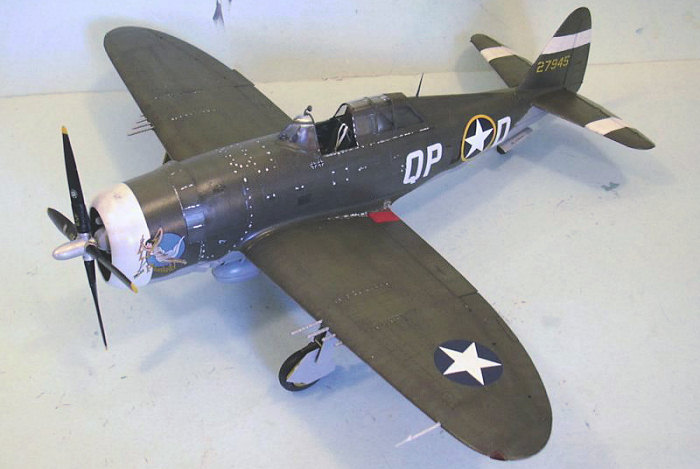
Trumpeter 1/32 P-47D 'Razorback' Thunderbolt
| KIT #: | 2264 |
| PRICE: | $124.95 DSRP |
| DECALS: | Two options |
| REVIEWER: | Tom Cleaver |
| NOTES: | Kit modified to a P-47C-4 |

| HISTORY |
In the most recent issue of "Flight Journal," famed Grumman test pilot Corky Meyer (the last actual "airplane person" to head a major airplane company) named the P-47 Thunderbolt the "best fighter of World War II - ETO." As he pointed out, it had high performance, yet a wartime-trained 200-hour pilot could fly it, with a well laid-out cockpit in which all the controls, switches, and instruments were handily located. It exceeded at three of the four performance parameters he established: air combat capability, fighter escort capability, ground support capability and photo-reconnaissance (it only missed on the latter). With 15,683 Thunderbolts produced between 1941-45, it is the most-produced American fighter ever. Republic delivered one in 1941, 532 in 1942, 4,428 in 1943, 7,065 in 1944 and 3,657 in 1945. 730 were operated by the RAF in Southeast Asia, while 446 flew for the French Air Force in Europe. The only theater of war in which the Thunderbolt did not fight was in Alaska; it is telling that the two top-scoring American fighter pilots in the ETO both flew P-47s exclusively, and all 10 of the top P-47 aces in the ETO survived the war. By D-Day there were 17 P-47 Fighter Groups stationed in England, and in the next eleven months, they swept across western Europe like an aerial scythe.
Steve Pisanos: “My Life Is The American Dream”
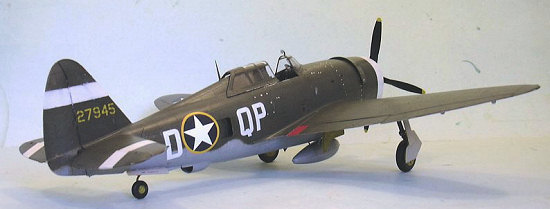 No less an observer of
men in war than former UPI war correspondent assigned to the 8th Air
Force Walter Cronkite - later “the most trusted man in America” - described COL.
Spiros N. "Steve" Pisanos, USAF (Ret'd) as "the single most interesting
individual it was my privilege to meet during the entire Second World War."
Having been fortunate over the past 25 years to be friends with Steve Pisanos, I
second “Uncle Walter,” and can attest to the fact that he is indeed the most
remarkable of the American aces of the Second World War it’s been my privilege
to meet.
No less an observer of
men in war than former UPI war correspondent assigned to the 8th Air
Force Walter Cronkite - later “the most trusted man in America” - described COL.
Spiros N. "Steve" Pisanos, USAF (Ret'd) as "the single most interesting
individual it was my privilege to meet during the entire Second World War."
Having been fortunate over the past 25 years to be friends with Steve Pisanos, I
second “Uncle Walter,” and can attest to the fact that he is indeed the most
remarkable of the American aces of the Second World War it’s been my privilege
to meet.
Born in 1920 in Athens, Greece, the son of a poor streetcar motorman with a large family, young Spiros Pisanos grew up expecting he would follow his father. One day in 1935, he met his destiny. "I was out in the country, when I heard a noise and when I looked up I saw two airplanes practicing aerobatics." Transfixed, the boy forgot about the everything else as he watched the fighters high in the sky. Minutes later, they broke away and flew to what turned out to be a nearby Greek Air Force base. "They let me close to the airplanes and explained them to me. I thought they were wonderful, and said I wanted to be a pilot and fly airplanes like these." Pisanos was quickly returned to reality when one pilot replied that, in Greece, a working class boy like he was could never fly airplanes. Pisanos left, but the officer had not disabused him of his dream.
"When I got home, I told my father I was going to America, where all things are possible, to become a pilot." His father could make no argument that would change his son's mind; he did, however, manage to elicit a promise that Steve would not leave home until he completed school.
In 1938, he was ready to leave for America. Too poor to pay for passage, he signed aboard a freighter as a cabin boy, planning to jump ship on arrival at his destination. "It took me three trips, because I didn't know there was a North and South America." After trips to Buenos Aires and Rio de Janeiro, Spiros Pisanos finally arrived in New York City, where he became what would be called today an "illegal immigrant."
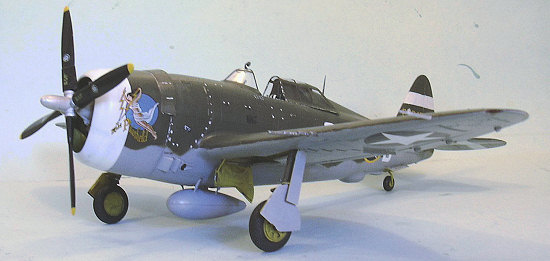 Pisanos found work
shelling oysters in Delmonico's Restaurant for ten dollars a week, which was
where his name was “Americanized” to Steve. "I knew I had to learn English
before I could fly, so each day on the streetcar, I would read the New York
Post with a Greek-English dictionary." Within a year, he felt ready to
begin flight training at Floyd Bennett Field. A one-hour lesson cost $5; by
this time his pay was $15 a week. "I moved to Plainfield, New Jersey after I
soloed, when I found a better job and a cheaper flight school." It was there
that he also met “Miss Plainfield,” a young woman whose real name he has never
revealed.
Pisanos found work
shelling oysters in Delmonico's Restaurant for ten dollars a week, which was
where his name was “Americanized” to Steve. "I knew I had to learn English
before I could fly, so each day on the streetcar, I would read the New York
Post with a Greek-English dictionary." Within a year, he felt ready to
begin flight training at Floyd Bennett Field. A one-hour lesson cost $5; by
this time his pay was $15 a week. "I moved to Plainfield, New Jersey after I
soloed, when I found a better job and a cheaper flight school." It was there
that he also met “Miss Plainfield,” a young woman whose real name he has never
revealed.
By 1941, Greece had fallen to the Nazis; like many other young Americans, Pisanos - with all of 70 hours in light planes, “bumped” to several hundred hours with an hour’s work on his logbook - sneaked across the Canadian border to join the RCAF. Accepted for flight training, he was a newly-minted Pilot Officer by the spring of 1942 when he arrived in England. After OTU training in the Spitfire and several missions with 402 Squadron, Steve was assigned - as an American - to 71 Eagle Squadron. He was soon flying missions across the Channel, and building the reputation as a level-headed, reliable pilot that he would carry throughout his career.
In August 1942, it was decided the three Eagle squadrons would join the U.S.A.A.F., where the boys who couldn’t get in the Air Corps at home would immediately become the most-experienced group of fighter pilots in the air force. At this moment, when his paperwork was being processed, the fact Steve wasn't an American citizen became known. "Ambassador Winant learned the Congress had just passed a law that said if an immigrant joined the American armed forces, they could become a citizen immediately." On September 10, 1942, in a ceremony led by Ambassador Winant at the American Embassy in London, Spiros “Steve” Pisanos became the first immigrant to take advantage of that law; immediately after he took the Oath of Allegiance to The United States as a citizen, he was sworn in as a 2d Lieutenant in the U.S. Army Air Forces. The son of the poor Athens streetcar motorman was not only a pilot, but an American citizen and a commissioned officer by Act of Congress.
The three Eagle Squadrons, now the Fourth Fighter Group, were soon equipped with the P-47 Thunderbolt, a fighter most of them disliked after their experience with the agile Spitfire. Not Pisanos. "I liked the P-47. It was big and powerful and it had eight machine guns. If you put the sight on the other guy and held it there, you had him." By February, 1944, when the Fourth transitioned into the P-51B Mustang, Pisanos was an element leader with 4 confirmed victories. He was also best friend and roommate of another former Eagle and son of immigrants, Don Gentile.
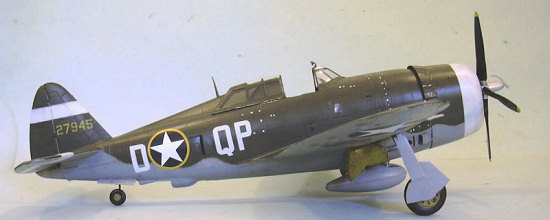 On March 5, 1944, the
Fourth Fighter Group demonstrated what was possible with the Mustang by flying a
strafing mission to Bordeaux, in the south of France on the Biscay coast, until
then far beyond the range of fighters based in England. Pisanos was shot down by
German flak as he tried to make his way back to England after chasing a Bf-109
into Spain and shooting it down for his fifth victory.
On March 5, 1944, the
Fourth Fighter Group demonstrated what was possible with the Mustang by flying a
strafing mission to Bordeaux, in the south of France on the Biscay coast, until
then far beyond the range of fighters based in England. Pisanos was shot down by
German flak as he tried to make his way back to England after chasing a Bf-109
into Spain and shooting it down for his fifth victory.
"All of a sudden, I was surrounded by flak bursts, and then the engine quit." The Merlin had been hit by shrapnel and caught fire. Steve had no choice but to bail out. "I tried to jump, but my parachute was caught on something in the cockpit. The plane went into a dive as I tried to get the parachute loose, and that dive put out the fire. Then I realized I was too low to jump, and tried to get back in the cockpit to fly it to a crash landing, but the parachute harness was so twisted I couldn't climb in! My only chance was to reach in the cockpit and grab the stick and make as gentle a crash landing as possible." His last memory before the impact was lining up to set down in an open field. "When I came to, I was lying in the middle of the field, the plane was burning over at the other end, and my shoulder hurt like hell." As if that wasn't enough, he heard German voices and saw troops across the field slowly approach the burning Mustang.
"I managed to run into the woods before they spotted me. I had no idea where I was or what I was going to do. Suddenly, I burst through some bushes onto a little country lane and there was a French farmer with a cart full of hay." The farmer motioned Steve to the cart and hid him under the hay, driving off before the German troops could arrive.
He was far from safe. "When we got to the farmhouse where the local Resistance was, they wouldn't believe I was an American because of my Greek accent." This was not an unfounded fear, since the Germans often attempted to introduce a "ringer" into an escape network to capture those who assisted. "I lay in that barn for three days with my shoulder hurting so bad I could barely move." Finally, the group leader asked for the code word each Allied pilot was given so the Resistance could identify him with London. "An hour later, he came back and everything was all smiles."
Steve was examined, and it was found he'd dislocated his shoulder. The Resistance had no doctor they could trust. "The local Countess was part of the group, and she had them dress me like a peasant. She took me to the airfield we'd attacked, where she told the Germans how this stupid Greek peasant boy had fallen out of an apple tree and needed his shoulder fixed." Steve always smiles when he tells the story of how he got his medical care: "My shoulder was fixed by a Luftwaffe doctor!"
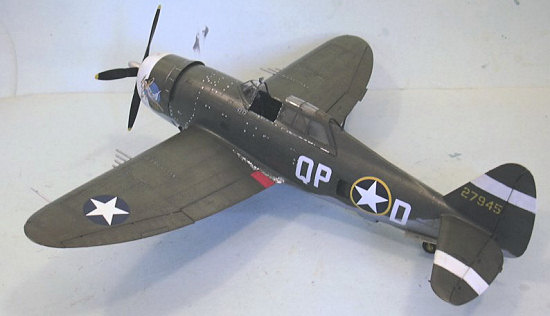 Steve eventually ended
up in Paris, where he hoped to be picked up by an RAF Lysander in the coastal
region of northwest France. With the invasion near, he was unsuccessful three
times in making rendezvous. Among many adventures he had with the Resistance,
one night stands out. "I was with a very disagreeable RAF Wing Commander in a
flat owned by a concert pianist, who lived with his mistress. He assured us
we'd be safe for the night, but I wasn't so sure." When he discovered that the
only hiding place was a portico outside the rear bedroom, ten feet above the
sidewalk and with no exit, he lost all desire to sleep.
Steve eventually ended
up in Paris, where he hoped to be picked up by an RAF Lysander in the coastal
region of northwest France. With the invasion near, he was unsuccessful three
times in making rendezvous. Among many adventures he had with the Resistance,
one night stands out. "I was with a very disagreeable RAF Wing Commander in a
flat owned by a concert pianist, who lived with his mistress. He assured us
we'd be safe for the night, but I wasn't so sure." When he discovered that the
only hiding place was a portico outside the rear bedroom, ten feet above the
sidewalk and with no exit, he lost all desire to sleep.
"About eleven, there was pounding at the door. We knew it was the Gestapo." The Germans searched and found no one.
Outside, Steve and the Wing Commander had jumped four feet through space from that portico to the next one. When the Gestapo pounded on the door of the next flat, they made the leap to the next in line. "We did that around to the front, and then there was no place to go, because it was the front door, it was too far to jump down."
The two Allied pilots spotted a row of bricks above the front entrance that stuck out a bit, part of the building decor. In a scene right out of a movie, they edged their way across, in momentary danger of slipping and falling each time they moved a foot, as they clung to the wall and made their way across the opening, ten feet above the German guards. Once in the next portico, they realized there were only three left. They jumped. And jumped again. And jumped again. They were now cornered.
"We heard the fists on the door, and watched the tenant cross the front room and open the door. The Germans were there. When he opened the door they grabbed him, beat him and arrested him ‑ he was the informer who'd told them we were there!"
Steve participated in the liberation of Paris, working with a Resistance team that went out at night and removed the bombs the Germans had placed on the Seine bridges. "We took the explosives out of the boxes they were in, and left the wires so that in daylight, the Germans would think all was well."
After the Allies liberated Paris on August, 25, 1944, Steve was flown back to Debden. As a successful escapee, he had to leave the ETO, but had his choice of duty stations. When he heard that Don Gentile was now a test pilot at Wright‑ Patterson, he volunteered for the same duty. "I got there in time to be best man at Don's wedding,"
Shortly thereafter, Don's wife Isabella introduced the dashing young Greek war hero to her Greek‑American girlfriend Sophie, who lived around the corner from Cincinnati's "Little Italy" in "Little Greece." Steve was able to court her on weekends because the new maintenance officer at Wright‑Pat would leave his convertible behind while he flew off to visit his wife who lived with his family in West Virginia. "Don Gentile introduced me to my wife, and Chuck Yeager let me use his car so I could marry her."
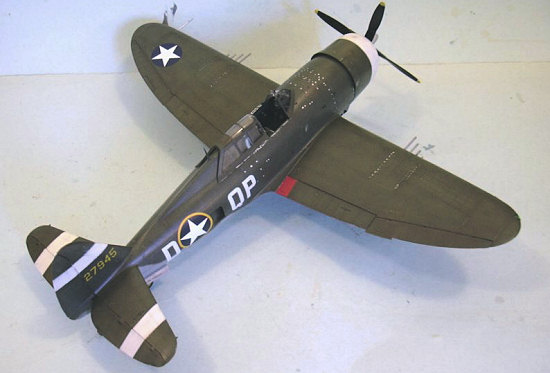 During the next year,
Steve and Don went out to Mojave Air Base in California, where he became friends
with Lockheed test pilot Tony LeVier while they tested the prototype of the F‑80
Shooting Star. A few years before his death in 1997, Tony remembered Steve:
"He was an excellent test pilot. He'd fly exactly what was supposed to be done
that day, he'd take it to the limit, and he'd bring back the data." Yeager ‑ no
fan of Don Gentile ‑ remembers Pisanos as "one of the best, most reliable pilots
I ever worked with."
During the next year,
Steve and Don went out to Mojave Air Base in California, where he became friends
with Lockheed test pilot Tony LeVier while they tested the prototype of the F‑80
Shooting Star. A few years before his death in 1997, Tony remembered Steve:
"He was an excellent test pilot. He'd fly exactly what was supposed to be done
that day, he'd take it to the limit, and he'd bring back the data." Yeager ‑ no
fan of Don Gentile ‑ remembers Pisanos as "one of the best, most reliable pilots
I ever worked with."
In 1946, on the basis of his wartime record and his experience as a test pilot, and having married Sophie, Steve left the Air Force and went to work as a pilot for TWA. This lasted until 1949, when he realized he didn’t want to be a “bus driver,” and he was accepted for a permanent commission in the Air Force as a Captain and sent to the University of Maryland to obtain a degree in aeronautical engineering.
On December 6, 1950, Steve experienced the saddest moment of his life. "Don was stationed in Washington, and asked me to come out and fly with him this weekend in a T-33, so we could both qualify for our flight pay that month. Unfortunately, I had a test the following Monday, and needed to spend every minute studying." Sitting in his apartment that morning, Pisanos heard an explosion and looked out the window to see the curling smoke. "Don had been shooting touch and goes, and he ran out of fuel and crashed. I was best man at his wedding and chief mourner at his funeral." Gentile was just a week past his 31st birthday. Chuck Yeager is more blunt in his analysis of the accident: "Don Gentile was too stupid to make sure he was drawing fuel from all his tanks. He ran the fuselage tank dry and crashed with his wings and tip‑tanks full of fuel. That's why it burned so well."
Steve completed his education in 1952 and became involved with the Air Force's guided missile programs. In 1967, he returned to combat flying in Vietnam. "The Air Force had just taken over the C‑7 Caribou from the Army. My unit was tasked with flying into forward firebases and other dangerous locations, and they were taking a lot of casualties." Pisanos eventually earned the Legion of Merit, in addition to several Air Medals, for transforming the squadron from a low‑morale unit into an effective combat squadron during his tour of duty.
In 1973, after finishing a tour as commander of a Titan ICBM unit, Steve Pisanos ‑ by now a full Colonel ‑ was assigned as Air Attache to the U.S. Embassy in Athens. Six years earlier, the democratic Greek government had been overthrown by a right wing military coup known as "the Colonels' plot." Pisanos' real job was to cultivate contacts within the Greek Air Force, in hopes of finding officers who would support a return to democracy. As the leading Greek fighter ace, Pisanos' reputation provided entree to the highest circles of an organization he could never have entered otherwise.
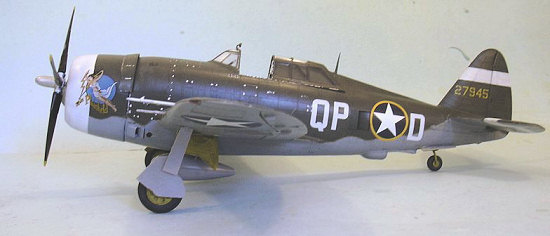 In 1974, Turkey invaded
Cyprus and the Cyprus Crisis resulted in the humiliation of the Greek armed
forces by the Turks. In the aftermath, the dictatorship was overthrown.
In 1974, Turkey invaded
Cyprus and the Cyprus Crisis resulted in the humiliation of the Greek armed
forces by the Turks. In the aftermath, the dictatorship was overthrown.
In January 1975, as he was preparing to return to the United States and retire from a 33‑year Air Force career, Colonel Spiros Pisanos - son of a poor Athens streetcar motorman, whose background prevented him ever entering the Greek Air Force ‑ was presented to the King of Greece, who personally awarded him the George Cross, Greece's highest award for valorous service, for his crucial work in bringing about the restoration of democracy to his homeland, the birthplace of the democratic ideal.
As he always says when asked to speak about his career, "My life is the American dream. There is no other country in the world where someone like me could do what I have done."
| THE KIT |
This is the second P-47D “Razorback” Thunderbolt to be released, the first being from Revell, issued in the 1970s. This kit effectively makes that kit obsolete on all counts other than price.
There has been a lot of yakkety-yak at That Other Place by the well-known hexpurtz (they know who they are and will be glad to inform you) as to whether or not the Trumpeter P-47D, with a MSRP of $124.95, is “three times better” than the Hasegawa P-47D which lists in the United States for around $45. As usual, the hexpurtz get it wrong, since they are trying to compare grapes and pears. The two kits are designed to fill different niches.
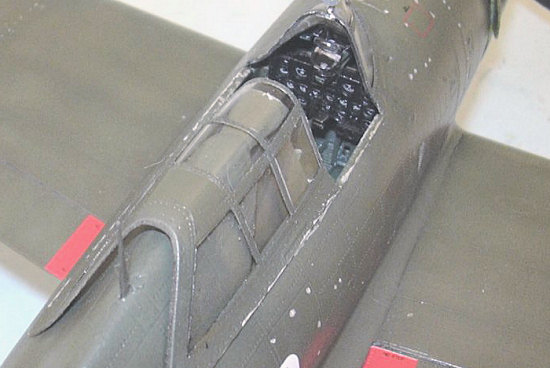 The Hasegawa kit is
“basic.” This is in line with Hasegawa’s long-held philosophy of providing a
basic kit that will make up into an acceptable model, leaving the additional
detail some modelers want to the aftermarket. As such, the kit makes up into a
good model, and those who wish to have a more detailed cockpit or engine can get
them from the aftermarket resin manufacturers. There is nothing wrong with the
kit at all and it provides good value for the price.
The Hasegawa kit is
“basic.” This is in line with Hasegawa’s long-held philosophy of providing a
basic kit that will make up into an acceptable model, leaving the additional
detail some modelers want to the aftermarket. As such, the kit makes up into a
good model, and those who wish to have a more detailed cockpit or engine can get
them from the aftermarket resin manufacturers. There is nothing wrong with the
kit at all and it provides good value for the price.
The Trumpeter kit is a bit more ambitious, with four times as many parts - 428 in all - in 17 sprues.. All control surfaces are separate, allowing a modeler to pose them dynamically. Full detail is provided for the guns and gunbays, the turbosupercharger, the accessories area behind the engine, and the engine itself. About the only thing a modeler would need to add to these areas would be electrical wiring. Anyone who wants to make an “opened-up” model has pretty much everything they would need.
The cockpits of each kit are pretty much similar in overall quality, and the vast majority of modelers will be perfectly happy with what’s there, only needing to get hold of Eduard’s new photoetch seatbelts to give the cockpit a good level of detail.
There has been a lot of hoorah about the surface detail of this kit, since it has engraved rivets and the P-47 was flush riveted. As anyone who has read my reviews knows, I mostly don’t like this phenomenon in modeling. That said, anyone who had no problem with the engraved rivet detail on the Trumpeter Me-262 (and I didn’t have a problem there) will have no problem with this surface detail, which is petite and restrained, and not much more than someone would achieve if they pulled out their “riveting tool” and riveted away on the surface. I think it will even look all right in a natural metal finish and will certainly look OK in a camouflage scheme.
Where the kit really shines is the provision of drop tanks and ordnance. Every kind of drop tank the P-47 ever carried is provided here. There are two 500-lb bombs, two 250-lb bombs, and two of the 3-tube bazooka sets. Six 5-inch HVARs and their associated rails are also provided, though the early P-47 never carried them. Thus, a modeler who wanted to adequately arm their Hasegawa P-47D or use ETO “paper tanks” will have them left over from this kit. Let me see, those would probably go for a good $25-$30 in the aftermarket resin sets (that don’t exist).
Additionally, the kit provides every prop used by the P-47, from the Curtiss Electric “toothpick” to the first paddle prop, to the Ham-Standard prop, to the later Curtiss-Electric “big paddle” used by the P-47M and P-47N. Thus, the modeler who can’t wait to turn his Hasegawa kit into a P-47M has the necessary prop here, as well as the correct “big bolt” crankcase housing. I know the “big paddle” prop is $10 from Jerry Rutman in resin.
So, the kit has a good $30-$40 worth of “goodies” that can be used on the Hasegawa kit to good effect.
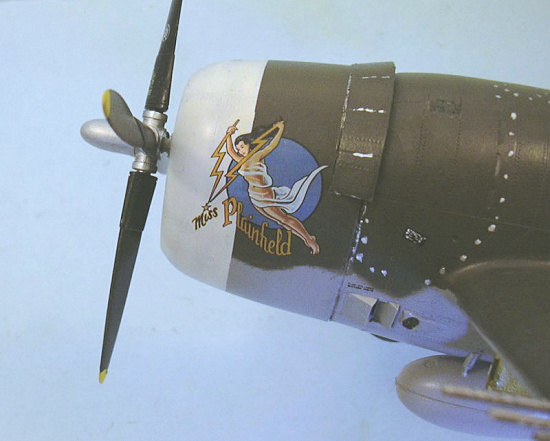 I particularly like the
fact that the cowling is molded in one piece, since the assembly of the
multi-part Hasegawa cowling gave me more fits than I ever had with DML Fw-190A
models. The cowling flaps provided - in both open and closed alternatives - are
strictly the later “notched” version, but it would not be hard at all to replace
the lower two flaps with “full-chord” flaps made from Evergreen sheet to do the
earlier P-47D-1 to P-47D-11.
I particularly like the
fact that the cowling is molded in one piece, since the assembly of the
multi-part Hasegawa cowling gave me more fits than I ever had with DML Fw-190A
models. The cowling flaps provided - in both open and closed alternatives - are
strictly the later “notched” version, but it would not be hard at all to replace
the lower two flaps with “full-chord” flaps made from Evergreen sheet to do the
earlier P-47D-1 to P-47D-11.
The tires are rubber, but - while I don’t like them - I have Trumpeter kits that are now approaching five years in age and have had no problem with the rubber tires melting the landing gear as was the case with other manufacturer’s rubber tires, so I don’t find them a problem.
As is unfortunately usual with Trumpeter kits, the decals are a dud. The markings for Major Bill Dunham’s “Bonnie” are done right off the cover of the Squadron “In Action” book, and are wrong. The “Donald Duck” for the alternative is also incorrect, and Trumpeter still doesn’t seem able to get the right proportions to U.S. national insignia. Fortunately, I know of several really good sheets of aftermarket decals that are going to be available in the not-too-distant future, so this is not going to be a problem. Additionally, if you can lay hands on the old Micro-Scale sheets released for the Revell kit, these are also good.
| CONSTRUCTION |
As with most Trumpeter kits, constructions is pretty easy if you commit the radical act of actually following the instructions, which are laid out in a sensible manner. I followed my rule: “if you can’t see it, I didn’t do it,” and left out all the internal ducting of the turbosupercharger, the engine accessory bay, and the gun bays, since I was building a “curbside” model.
For
those who want to build a P-47 that is opened up, I had the rare privilege
recently of seeing the P-47 razorback out at Planes of Fame with the engine
cowling and accessory section opened up, and what is here in the kit is accurate
and sufficient to 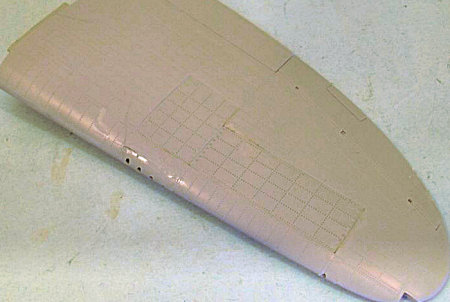 create a
nicely-detailed model, if one is willing to put extra effort into putting in the
electrical wiring and such. The gun bays are good, and the provision of
ammunition in rubber parts will allow you to pose the ammo right; again, you’ll
only need to worry about the electrical wiring.
create a
nicely-detailed model, if one is willing to put extra effort into putting in the
electrical wiring and such. The gun bays are good, and the provision of
ammunition in rubber parts will allow you to pose the ammo right; again, you’ll
only need to worry about the electrical wiring.
One thing I learned is that the panels on the wings will end up not being even with the rest of the wing surface if you just attach them. If you use some thin 10-mil sheet styrene - or buy thin Evergreen strips to avoid having to cut the strips - and run these along the mating surfaces, the gun bay panels and the other underwing panels will fit perfectly without having to use any gap-filler. I only had to use a minimum of Mr. Surfacer 500 and then 100 along the centerline seam ahead of the cockpit on the upper side of the fuselage and all along the center line of the lower fuselage. Since sanding this smooth results in the removal of the nice surface detail, I rescribed panel lines and then rescribed the rivet lines with my rivet tool.
I
decided to build the model with the flaps up. Steve told me that every time you
land a P-47, the pilot pulled the flaps up as soon as he touched down so that
the airplane wouldn’t bounce, which could have catastrophic consequences if the
bounces got out of control, which was possible with the lowered flaps blanking
the airflow over the rudder and elevators in the tail-down position. This is
why almost all photos of P-47s on the ground have them with raised flaps. Most
kits that have positionable flaps are really only designed to be built with the
flaps up, without lots of effort to make them fit correctly (think the Tamiya
Corsair). Even the Tamiya and Hasegawa P-47s are much easier to build with the
flaps down. This kit, however, is designed so that the
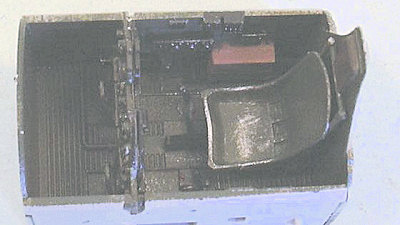 flaps do fit in the up
position. I posed the elevators in the down position, as the spring-loaded
control stick would stick in the forward position if the pilot kicked it on the
way out of the cockpit.
flaps do fit in the up
position. I posed the elevators in the down position, as the spring-loaded
control stick would stick in the forward position if the pilot kicked it on the
way out of the cockpit.
I used the kit seat belt set, which looks OK, but it would look better with the new Eduard 1/32 posable photo-etch USAAF seatbelt, which is a very detailed, very fiddly bit of construction to assemble all the various parts, but the result is the most accurate looking US seatbelts available in any scale - they look exactly like the seat belts I have strapped into out at Chino the past 30 years and well worth the money. The rest of the cockpit as provided in the kit is just fine, particularly since the colors are dull dark green and black. I personally wouldn’t waste my money on a resin cockpit for this kit, so long as I used the Eduard seatbelts to make the seat look right.
The modification to change the kit from a P-47D-15-RE to a P-47C-2-RE was quite simple. I used the two lower “closed flaps” parts on each side to fill in the lower area of the cowling that didn’t have flaps on the C-model, smoothing that in with cyanoacrylate glue and Mr. Surfacer 500. I then used the “open flaps” with the lower two flaps cut off on each side for the flaps on the cowling. Since I was making a model of “Miss Plainfield” as she appeared in mid-July, 1943, just after the airplane had been plumbed to take the pressurized 75-gallon drop tank on the fuselage centerline, I didn’t have to change the profile of the lower fuselage to make it shallower. The original P-47C-2 as delivered to the 4th Fighter Group did not have provision for external fuel. However in June and July 1943, the aircraft were plumbed to allow use of a pressurized 75-gallon drop tank on the centerline, and renamed P-47C-4 to denote the field modification. I used the drop tank shackles and one of the 75-gallon tanks provided in the kit for this.
The rest of the modification involves not using the wing pylons, which is easy, and remembering that a P-47C would only use the early “toothpick” Curtiss-Electric prop.
I also enjoyed the discovery that the machine gun barrels are “drilled out” in the mold (unlike the Hasegawa guns).
| COLORS & MARKINGS |
Painting:
I am fortunate to have been recently given the long-lost photo albums of Mike Sobanski, a pilot in the 4th Fighter Group who was a good friend of Steve (a book is in progress), and have been able to examine three contemporary pictures of “Miss Plainfield”, and to talk with Steve about the airplane.
The
P-47C series was painted with pre-war US Army Olive Drab which is a “green base”
Olive Drab. This faded differently at high altitude than did the later “brown
base” Shade 41 Olive Drab. I “UV-faded” the upper color using light grey and
red in very, very small amounts, keeping the strong green tone of the color with
a very little bit of brown OD added in as a very thin wash at the end. The
spring and summer of 1943 during which “Miss Plainfield” was flown was a very
cloudy time in northeastern Europe and there would have been virtually no
ground-level sun-fading, with fading only being from ultraviolet light at
altitude once they broke  out of
the clouds. This color was confirmed by Steve from memory.
out of
the clouds. This color was confirmed by Steve from memory.
Additionally, if you want to do a P-47C, you need to be aware that it had a different paint pattern than the later P-47D. This is primarily seen in the higher demarcation line between the upper and lower color on the rear fuselage between the wing and the horizontal stabilizer. Also, the wavy line was done by the individual painter working freehand, and no two P-47s had a similar line.
For those who debate the color of the rear area under the canopy glass, Steve is adamant that this was painted olive drab. Given his recall of other details, I take that as the most accurate information we’re ever likely to get.
Decals:
I have long wanted to make a model of Steve’s P-47C-2, “Miss Plainfield,” in which he scored his first three victories in the spring and summer of 1943. I was able to obtain a set of 1/32 decals for the personal marking and the squadron codes from a good friend who made them for me on his ALPS computer. I managed to find the right-size early national insignia on several different decal sheets held in the decal dungeon. I used the stencils from the kit sheet.
Those who want to make a model of “Miss Plainfield” in any scale (there is a good 1/48 sheet from Lifelike) will discover that there has been some controversy over the color of the background circle, with some saying it is red and others claiming it is blue. I called Steve - who is a veritable fount of accurate information on things like markings (unlike many other aces) - and he assures me that the nose art was on a blue background and that the squadron codes never had red outlines. Unfortunately, the Lifelike decals have the red background on the nose art.
| FINAL CONSTRUCTION |
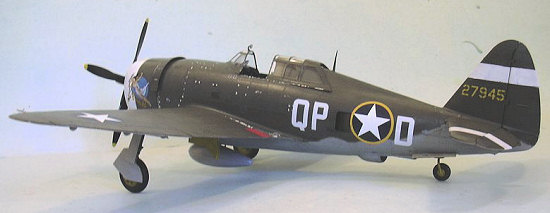 The photos of 4th
Fighter Group P-47s in Mike Sobanski’s albums show very clean airplanes. There
was not a lot of “dings” other than the area where the pilot climbed onto the
wing, and where the various fasteners were opened and closed with screwdrivers.
The photos of 4th
Fighter Group P-47s in Mike Sobanski’s albums show very clean airplanes. There
was not a lot of “dings” other than the area where the pilot climbed onto the
wing, and where the various fasteners were opened and closed with screwdrivers.
The airplanes in the 4th were frequently polished by the ground crews to give additional speed, so I used Xtracrylix Flat, followed by a thin coat of Xtracrylix Satin, to give a low-sheen finish to the paint.
The P-47 is not an airplane on which you see a lot of exhaust staining, since most of the exhaust went into the turbocharger and was then vented out the lower rear fuselage exhaust. The Sobanski photos show airplanes with only a very little bit of exhaust staining from the exhausts immediately aft of the cowling ahead of the wing. I shot a thin coat of Tamiya “Smoke” over the inner gear doors and gear wells, to simulate oil stains.
| CONCLUSIONS |
I am very happy to have this very individual model, which memorializes one of my favorite people. The conversion to a P-47C is easy.
The Trumpeter P-47D “Razorback” is an excellent kit that provides good value for money. With the separate controls and the added interior details, modelers have everything they need to start with in producing a contest-winning model. The assembly is as easy as anything done by Tamiya or Hasegawa. Since the kit will is now available from online sources for less than the MSRP, the sturm und drang about the price is irrelevant. Those who don’t want it won’t buy it and those who do will. To me, it represents good value for its price even at the MSRP and I recommend it to those who like the Thunderbolt. It beats the socks off the other 1/32 Razorback on everything but price. I personally like the overall look of the kit when compared to the Hasegawa P-47, and think the extra detail is worth the money.
Thanks to Stevens International for the review kit.
October 2007
Copyright ModelingMadness.com
If you would like your product reviewed fairly and fairly quickly, please contact the editor or see other details in the Note to Contributors.